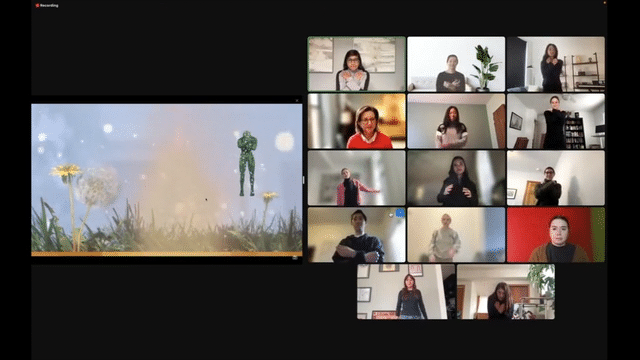As we return from summer vacation to the regular work week, we experience the stresses of office life: we take in and act on large amounts of information; while sitting at our desks; staring into screens, or even running from one patient to another. Many of us work with minimal break time or inadequate rest as we fight burnout and exhaustion. A growing body of research has demonstrated that our current sedentary work culture literally kills- according to a 2010 study, it increases men’s chances of early death by 18% and women’s chance by 37%.
As a response to this growing crisis, Melissa Painter’s female-founded company Breakthru launched an immersive, interactive, movement-based app: Breakthru: Movement Microbreaks for the Modern Workday that provides users with guided 2-minute breaks to boost mental and physical health for individuals and team – and is backed by none other than Microsoft.
Movement and breathing deserve a role in our thinking day.
“For many years my team and I have been working at the intersection of the human body in motion, interactive tech and AI, asking the same question: how can technology, in the flow of our thinking day, inspire us to move more, take meaningful microbreaks, and grow our embodied cognition. Breakthru gives us the ability to put ourselves back in our bodies and, by doing so, gives us access to a world of fresh intelligence,” said Ms. Painter.
How Does it Work?
- You start by picking the mood you are looking for- confident, joyful, energized or centered. Each mood is accompanied by a color – the experience is interactive and multi-sensory, with spatial sound.
- You push away from the computer and follow the guide, created by motion capture from movement experts whose expertise ranges from akido, tai chi, physical therapy, yoga and dance. There’s no right or wrong way to play- the movement of your body affects the sound and the visuals!
- Each mood contains a series of different break options – there is a world of movement behind each mood option, each of which hold an entire series.
- Breakthru invites you to set custom reminders and allows you to see your history. It also uses interactive feedback – machine vision (AI) – so the movement of a user’s body changes the sound and visual.
- You can set team challenges, send appreciation to a colleague, use Breakthru as an ice breaker in meetings, win streaks, and unlock new breaks over time.
- Breakthru is constantly evolving and new breaks are added continually.

Breakthru’s movement microbreaks are powered by AI, spatial computing, and our bodies in motion. Fully integrated into shared work tools – Teams, Office 365, Slack – Breakthru is easy to reach for in the flow of the day. Launched with backing from Microsoft, Breakthru is now in global use in over 45,000 organizations and in 72 countries, helping users protect against the negative health impacts of sedentary behavior, prevent burnout and foster body awareness.
One of the surprises in launching Breakthru is that its swift adoption around the world has revealed a need in many different sectors. Current customers include Microsoft, The NHS (National Health System in UK), PwC, The Music Center, Steel Case, lululemon, as well as community-based nonprofits, governmental and arts organizations, public libraries, botanical gardens, preschools and universities around the world. (Breakthru has committed, as part of its mission, to be free, forever, to schools around the world.) Breakthru addresses a universal pain point: many people are forced to sit still for the bulk of their work and school days, while others are expected to be on their feet and with no breathing breaks or pause or time to check in with themselves in the flow of the work/school day.
Research has proven that small movement-based microbreaks have a positive effect on both health, cognitive focus/function, and productivity, but in today’s work environment, it can be challenging for employees to initiate breaks in the workday without the support of their leadership. Social scientists have termed this corporate culture of busyness as ‘Time Poverty’ and urge organization to stop conflating activity with achievement [Harvard Business Review]
According to a Cornell University study, work performance increased by 12.8% when subjects were allowed frequent microbreaks and by almost 15% when these microbreaks were combined with stretching exercises.
Studies show that it’s in a company’s best interest to give employees autonomy in terms of taking microbreaks when they are needed—it helps employees effectively manage their energy and engage in their work throughout the day. In a study conducted by Staples, 1 in 5 employees said guilt is the reason they don’t take any breaks.
Breakthru can improve the work environment for the workplace as a whole. As people shift back into the workplace after years of remote or hybrid work, they seek unstructured time with their coworkers. Movement, individually or in community, can improve worker relationships and reduce conflict.













